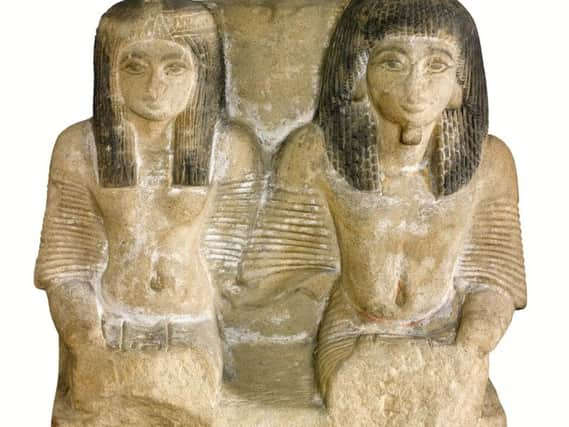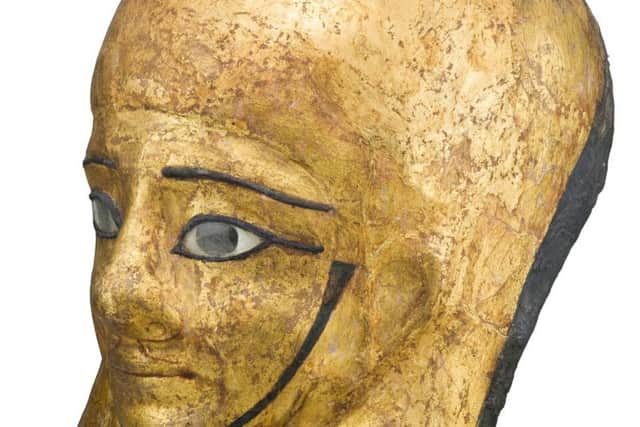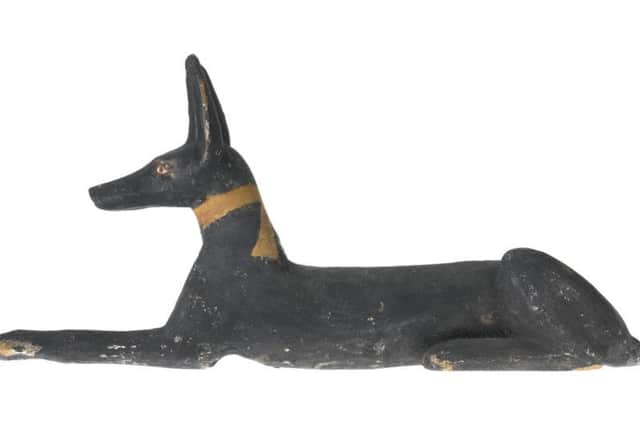Treasures found in police chief's ancient tomb to be showcased in Edinburgh


The National Museum of Scotland’s exhibition will chart its use over 1000 years after its creation in the ancient city of Thebes shortly after the the reign of Tutankhamun.
It was regularly used before being sealed off in the early 1st century with the burials of an entire family shortly after the Roman conquest of Egypt and not reopened until an excavation in the 19th century.
Advertisement
Hide AdAdvertisement
Hide AdStatues, coffins, furniture and amulets, as well as mummy bandages, tags and a mask will be among more than 100 objects on display in the show - The Tomb: Ancient Egyptian Burial - next year.


It is being staged ahead of the unveiling of a new gallery dedicated to Egyptian treasures in 2018 which will showcase highlights from the 6000 objects in the museum collection, many of which date back to the Victorian attraction’s origins.
A spokeswoman for the museum said: “At the height of the ancient Egyptian empire, hundreds of tombs were carved in the desert cliffs opposite Thebes. An expensive and labour-intensive process, these tombs were constructed for the elite, and intended as exclusive final resting places.
“However as Egypt’s wealth and power waned through political fragmentation, loss of territory, and invasion, resourceful Egyptians reused and recycled everything from coffins to tombs themselves.
“Although tombs were reused and forms of burial objects changed, their main purpose stayed the same: to remember the individual, to protect their body, to transform them into a semi-divine being, and to provide for their spirit.”


Dr Margaret Maitland, curator of the exhibition, said: “Ancient Egypt is really popular with museum audiences throughout the UK. There are just so many amazing objects that have survived.
“Egypt really won the geography lottery in having fantastic building stone and an incredible environment. It allowed the people the time to make all these incredible crafts and the climate has preserved everything so well.
Advertisement
Hide AdAdvertisement
Hide Ad“There is such a richness of material that has survived from this period.
“There’s also a real sense of fascination in ancient Egyptian burial and the human stories. The more you find out about the human stories of Egyptian people you realise we have more in common than we might have first thought.”


Other highlights of the 2017 programme include the first major exhibition devoted to the Jacobites for 70 years and the most comprehensive museum to date exploring the world of primates.
Dr Gordon Rintoul, director of the museum, said: “Our collections cover an astounding breadth of subject areas and disciplines.
“Next year’s exhibition programme reflects this, showing unique collections, international treasures and fresh insights encompassing our closest evolutionary relatives in the natural world, one of the world’s most enduringly fascinating ancient civilisations, and key events in the story of Scotland.”